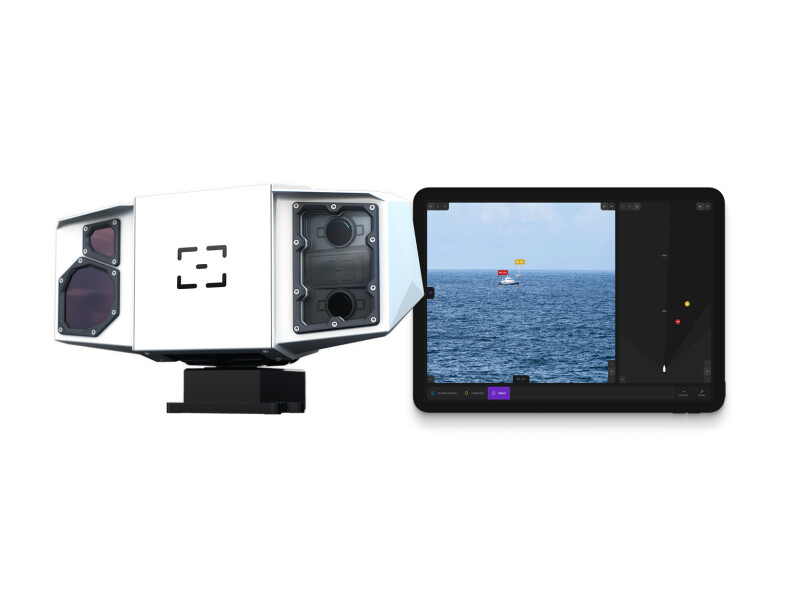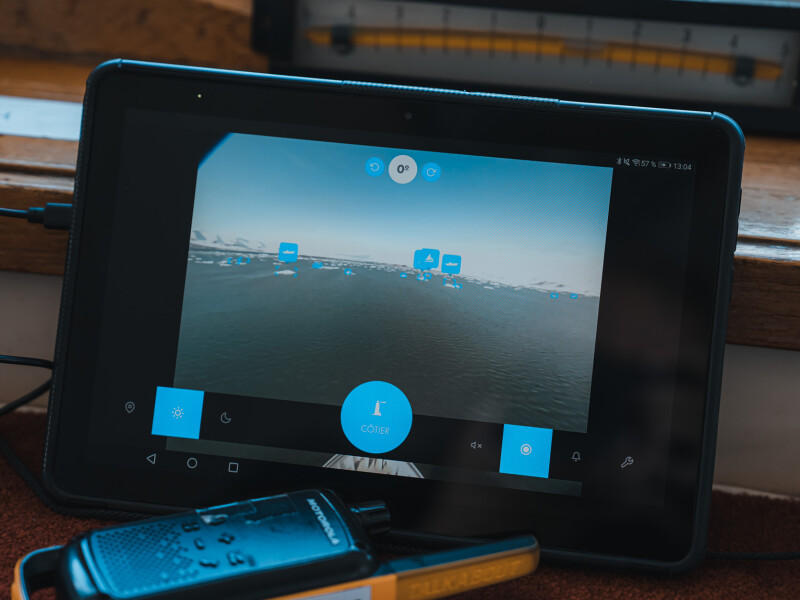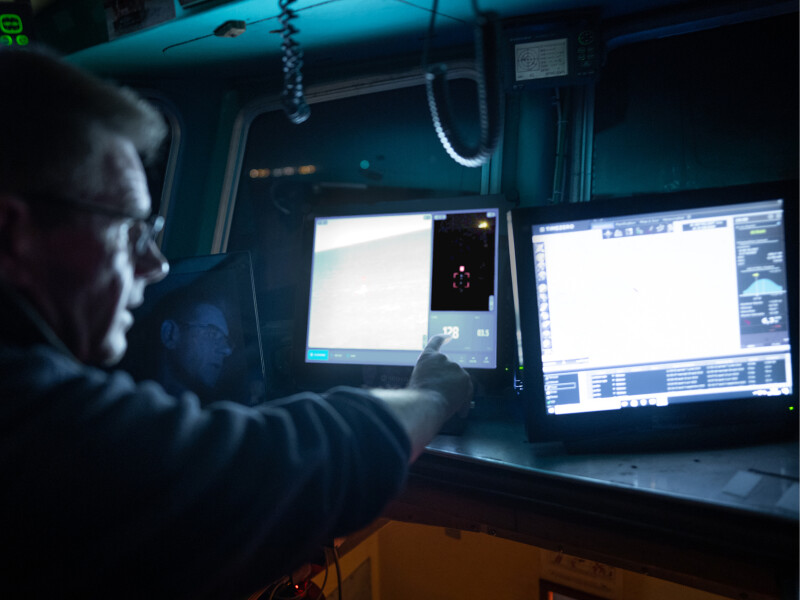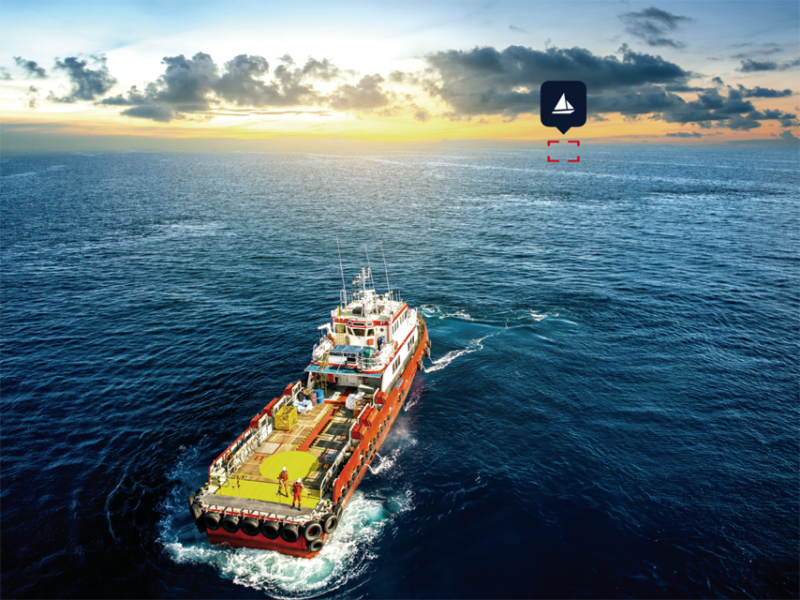Imagine being at the helm of a commercial vessel or part of a search-and-rescue team in rough seas at night. Radar is picking up objects, and your night-vision camera picks up shapes, but you have no idea if they’re waves, whales, or a shipping container bobbing at the surface.
If your boat has SEA.AI, a computer-based machine-vision system, the technology could identify objects in more detail than the human eye can provide and alert crewmembers about what’s in front of them.
The Austria-based company was founded in 2018 after an autonomous driving engineer had a harrowing experience while boating at night with his father, unable to see anything ahead of the boat. “He felt his father hadn’t equipped the boat with a system to assist,” said Solenn Gouerou, head of marketing and communications at SEA.AI. “But when he searched for one to buy, he realized there was nothing available.”

SEA.AI currently has more than 600 systems in the field, primarily in Europe, and a database of more than 18 million annotated marine objects. That database is continuously growing and is updated regularly. The company has added employees in the U.S. and is hoping to expand its footprint in the commercial, search-and-rescue, and military segments.
Some of the company’s early collaborations were with sailors in the Vendée Globe, an around-the-world single-handed sailboat race. “We started the project with a couple of the racing teams to develop the product specifications, how strong it should be, what characteristics for the alarms, and how much it should weigh,” said Gouerou.
She explained that AI (artificial intelligence) involves training the machine to properly identify objects. Before a computer can identify something, it needs input from a camera that can see farther and sharper than the human eye. SEA.AI uses Teledyne FLIR cameras for its Sentry system used in commercial, military, search-and-rescue vessels, and superyachts. The self-contained unit weighs just under 10 lbs., while the lighter Competition model weighs 1.5 lbs. and mounts high on the mast of a racing sailboat. SEA.AI is compatible with multifunction displays from Garmin, Furuno, B&G, Navico, Simrad, and Raymarine, plus computer and smartphone technology including Apple, Android, Windows, and Linux. If a boat already has a FLIR camera, it can be linked to the SEA.AI brain.

The cameras link to the SEA.AI brain that is the heart of the system. The brain is constantly updated as technicians train it and add floating objects to the database. Because SEA.AI relies on optical and thermal sensors, it can’t see objects below the surface. “Our AI wasn’t immediately effective,” said Gouerou. “We had to train it to tell the difference between waves, sun reflections, moon reflections, and real objects.”
SEA.AI adds to a user’s situational awareness by being able to identify a target vessel that might not have AIS technology. “The only thing that could see them is a thermal camera,” said Gouerou. “Then we put AI on top of that and the computer sends the alarm.”
In a real-world situation, the camera sees what’s in front of a vessel, and then the machine analyzes each pixel of each image the camera captures. If it detects something that isn’t water, the computer cross-references multiple images and identifies it as an object provided it is in the database. That includes whales when they surface, which could be key to preventing vessel collisions with the largest mammals in the ocean.
Looking at some numbers, the SEA.AI system with the Sentry unit can see a small object like a buoy or person overboard up to 2,300' away, a dinghy or tender up to 1.9 miles away, and a private pleasure or sailing craft up to 4.7 miles away. It can pick up a large vessel as far away as the horizon, weather permitting.

In addition to object detection, with Sentry, SEA.AI can be used for target tracking, collision avoidance, and establishing perimeter surveillance with 360° scanning of the surroundings. It will send alerts for approaching objects that have entered a preset perimeter. With eight times electronic zoom, it can also investigate areas of interest, and forward panning can pick up impending collision risks with objects in the vessel’s path.
The basic installation kit includes 10-meter power and data cables, a 24/24-volt converter (to ensure stable voltage), an Ethernet coupler, and a spare fuse. Bump up to the professional installation kit and get a SEA.AI joystick and cable, a ShipModul MiniPlex N2K Ethernet gateway, and an NMEA 2000 backbone with four connection points, male and female resistors, power cable with fuse, and drop cable. The camera and black box draw minimal power, so there’s no strain on a vessel’s battery bank, according to SEA.AI.
Pricing for the Sentry camera unit starts at $46,990, and the SEA.AI Brain retails for $8,990.




